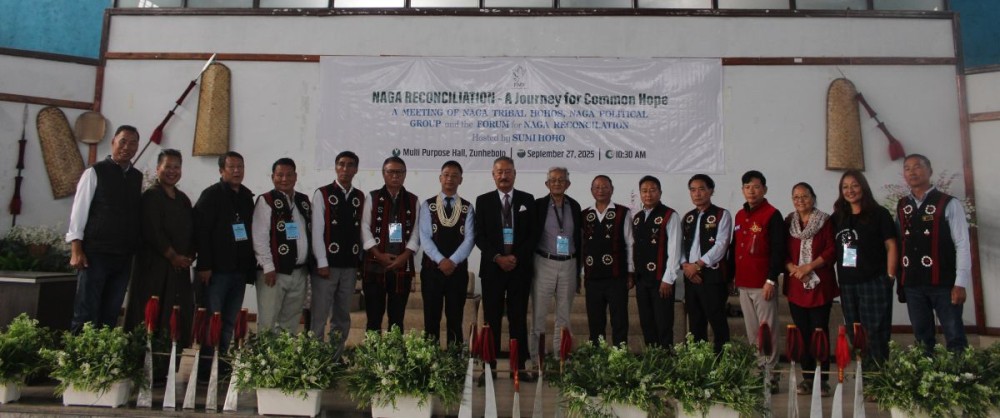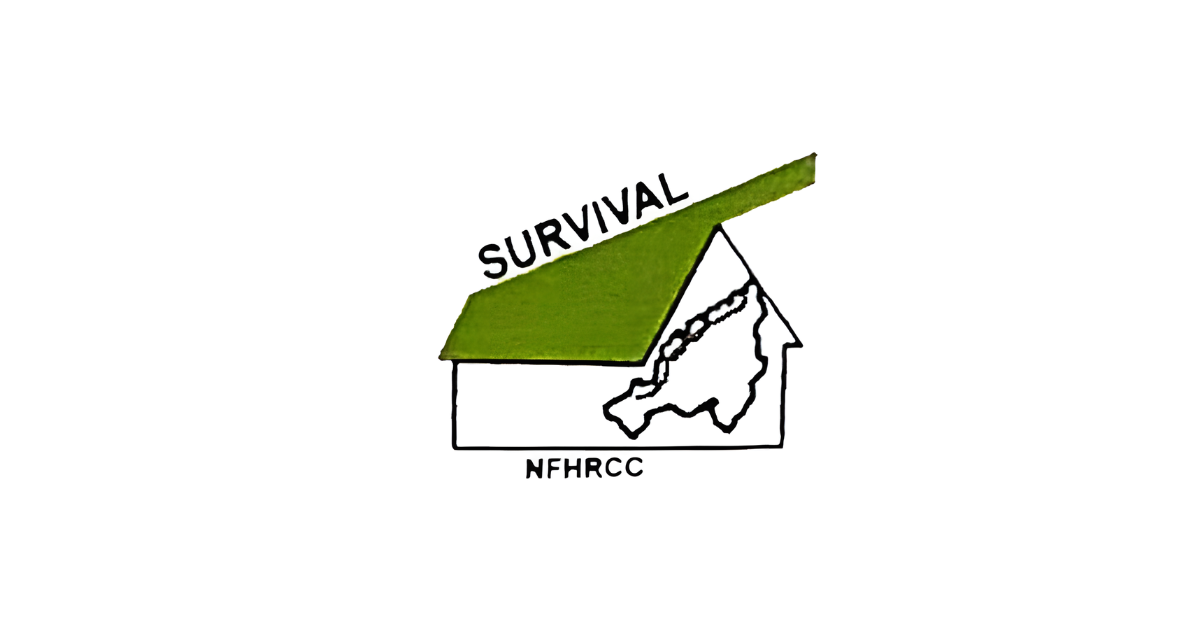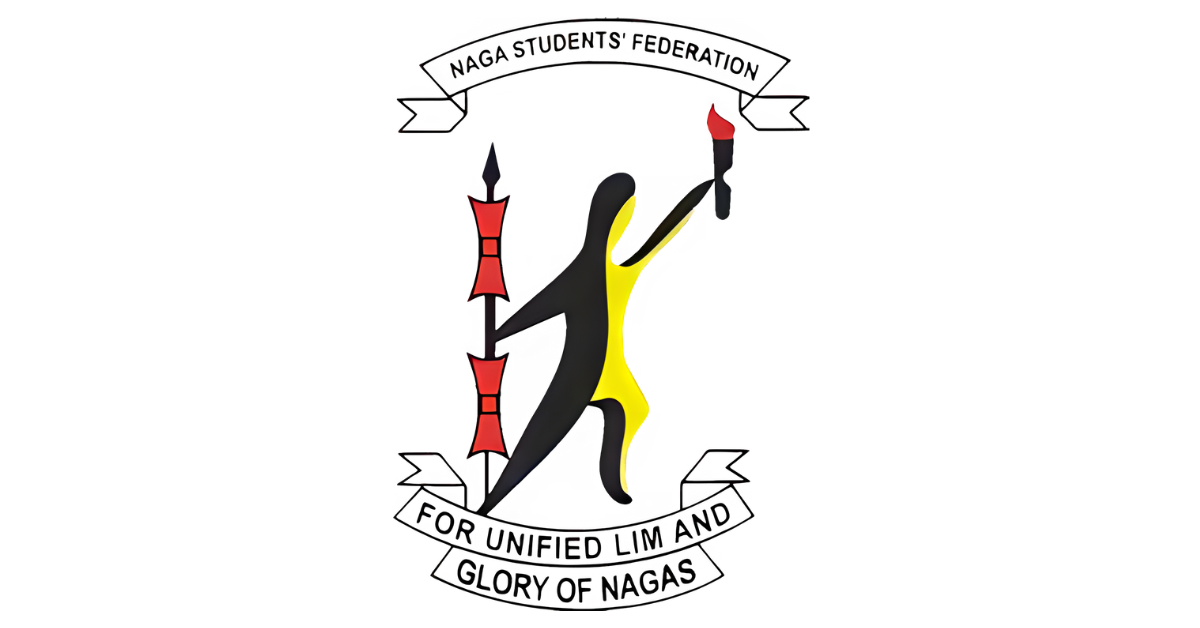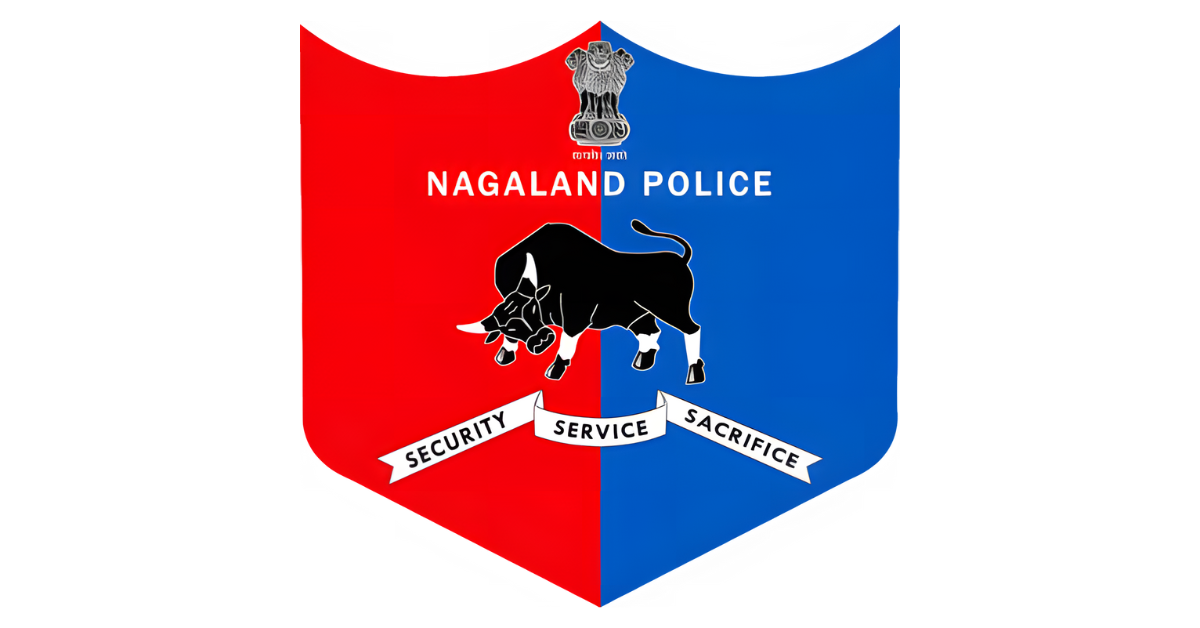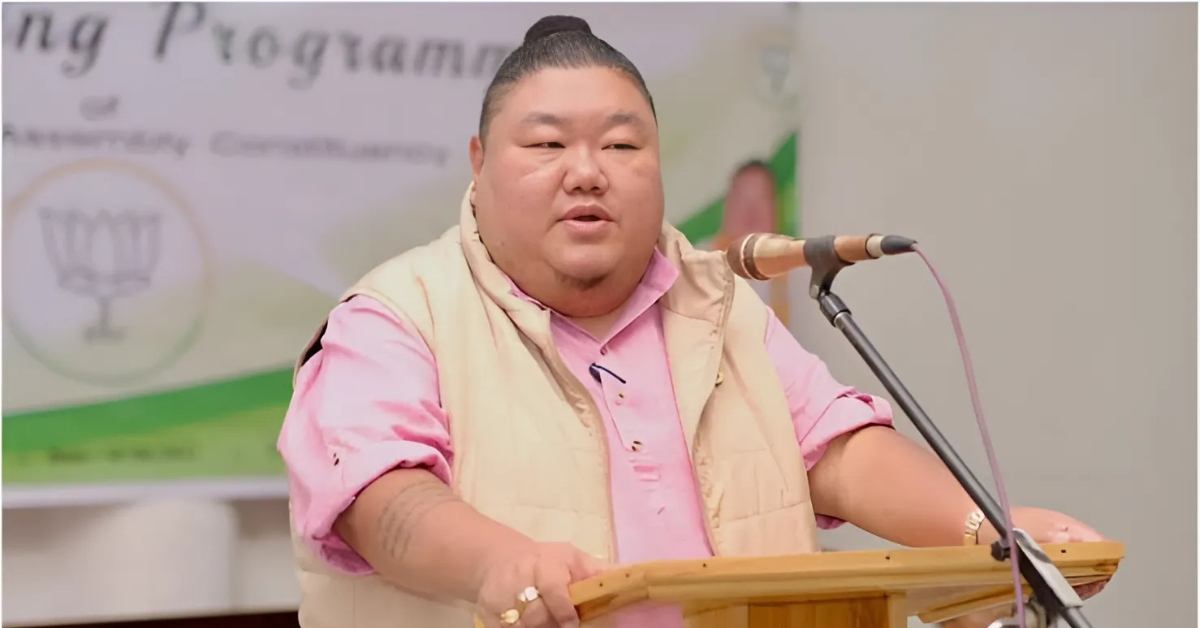The Zunheboto Resolution brought together 15 Naga political groups and 33 tribal bodies on September 27 in Zunheboto, Nagaland, outlining a joint plan for unity, reconciliation, and shared negotiations with the Government of India.
Convened by the Forum for Naga Reconciliation (FNR) and hosted by the Sümi Hoho, the gathering drew over 200 delegates and concluded with a four-part resolution that includes public prayer observances throughout October.
Unity plan and common negotiating platform
Delegates adopted the resolution at the Multi-Purpose Hall under the chairmanship of Rev Dr Ellen Konyak Jamir, with an emphasis on practical cooperation among the Naga Political Groups and tribal hohos. The resolution urges all groups to align under a single structure called the Naga Machang and to begin using a new co-ordination body, the Council for Naga Cooperation and Relationship (CNCR), which will serve as the vehicle to bring parties into direct dialogue.
Also Read: Mithun Manhas elected unopposed as new BCCI President
The FNR has so far facilitated at least 15 reconciliation meetings in 2025, including those hosted in Jotsoma and Ungma, showing gradual progress in bringing different sides together.
Speakers also stressed the importance of engaging with New Delhi as one collective entity rather than fragmented factions. The president of the Sümi Kükami Hoho, Hetoho S Zhimomi, highlighted the need for a unified front to secure lasting political decisions.
The gathering expressed respect for the Government of India’s past acknowledgement of the uniqueness of Naga history while calling for joint negotiations that reflect consensus across both political groups and civil society.
Forgiveness, participation, and timeline commitments
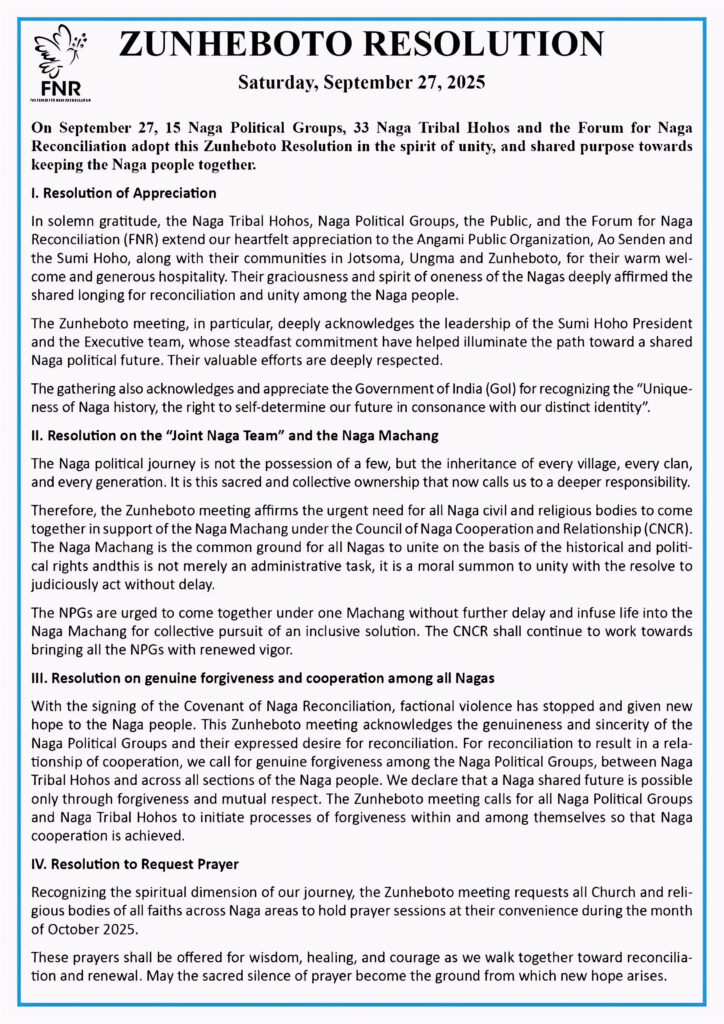
The resolution calls for genuine forgiveness among NPGs and tribal bodies, pointing to the decline of factional violence since the Covenant of Naga Reconciliation. It promotes structured co-operation to replace informal engagements across parties.
The plan sets out October 2025 as a month of prayer led by churches and religious organisations across Naga areas, an effort organisers said would both deepen public participation and create visible markers of progress for the wider community.
Appreciation was recorded for the Angami, Ao, and Sümi tribes, who hosted previous reconciliation meets this year. Their hospitality was pointed to as evidence of support for unity that extends beyond political leaders to communities at the grassroots.
Delegates cautioned that prolonged division risks building fatigue within villages and that the CNCR must work quickly to consolidate co-operation, guided by both moral responsibility and practical need.
Also Read: Nagaland minister apologises after Kaziranga University unrest over Zubeen Garg
Immediate steps and expectations ahead
Leading into the Zunheboto gathering, the FNR called for a renewal of trust and candour in the reconciliation process. The outcome of the event is clearly measurable, with commitments involving 15 political groups, 33 tribal hohos, the launch of the CNCR, more than 200 delegates in attendance, and a defined timeline of October prayer meetings. These concrete steps are expected to be monitored closely in the weeks to come.
Attention now turns to whether the CNCR can bring all sides to work under the Naga Machang principle and present a consolidated approach to negotiations before year end. Organisers framed the decision as a collective inheritance, emphasising that the political journey belongs to all villages and clans. The key indicator of success will be whether the resolution moves from agreement on paper to co-ordinated action under a single negotiating platform.
